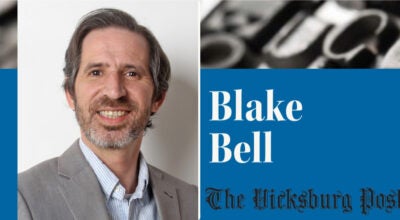The first Sunday, after the first full moon, after …
Published 5:49 pm Friday, April 19, 2019
By Yolande Robbins
Almost no one who’s undergone a Catholic school education back in the 1950s has trouble remembering the daily symmetry between faith and academics. True enough it was your English class in session. But the sentence you were diagramming was likely “The blood of the martyrs is the seed of the church.” This particular one contained two prepositional phrases and a predicate nominative besides.
And in geography which followed, it was likely the same. There was moral content to every lesson you learned. Even in geography, we were always studying “Our Neightors” somewhere — to the north, south, east and west. Didn’t matter where; they were our neighbors. There was so much moral content.
Even in math, especially in math, where you were always dividing something by three, this particular three, Father, Son and Holy Ghost, were three and indivisible! “Do you understand?”
But my personal favorite was “Christian Courtesy and Manners” which had at the beginning a somewhat modified picture of Christ himself at the “Last Supper” table, with these words inscribed below him: “To Christ, The Perfect Gentleman.”
That was how and where I learned to properly set a table.
And because today is Easter, here is something else we learned back then and have probably forgotten.
Easter is always the first Sunday after the first full moon after March 21. That’s how it’s determined each year, and that is how it’s set. And it was set by the early Church.
Jesus’s agony and death took place in the early spring, at the time of Passover, which usually occurs in April. And the vernal (or spring) equinox occurs every year about this same time, in the northern hemisphere about March 20 or 21.
It is one of two moments in the year when the sun is exactly above the Equator, and day and night are of equal length. In 325 CE, the Council of Nicaea established Easter would be held on the first Sunday after the first full moon on or after the vernal equinox. But because the equinox can occur on one of several possible dates — the 19th, 20th or the 21st — the church chose March 21 and that continues to be the basis for calculating the date.
Now none of us really understood this, but we learned what we could of it anyway, and remembered it — which is why I am writing this today.
It reminds us the church has been and continues to be a huge cultural force in our lives. It is often the cause of so much we practice, even when we don’t understand or know about it.
Of course, all of these rotating dates can’t be the true date of the real resurrection. But for all of us who do believe, it did happen on one date in one year. Which is why we are celebrating today.
Indeed, “This is the day which the Lord has made. Let us rejoice in it and be glad.”
Happy Easter, everybody.





